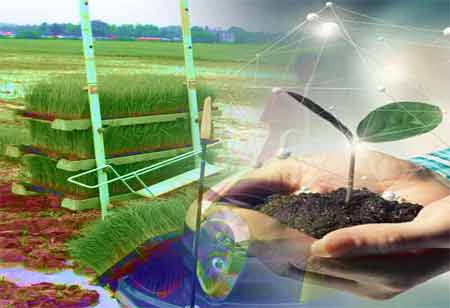Thank you for Subscribing to Agri Business Review Weekly Brief
Optimizing Cannabis Cultivation through Vertical Farming Techniques
Vertical farming, also known as layered cultivation, has emerged as a groundbreaking methodology transforming the landscape of cannabis cultivation practices.

By
Agri Business Review | Friday, December 29, 2023
Stay ahead of the industry with exclusive feature stories on the top companies, expert insights and the latest news delivered straight to your inbox. Subscribe today.
Vertical farming, or layered cultivation, is a sustainable method in cannabis cultivation that maximizes crop productivity, minimizes pesticide reliance, and offers year-round cultivation, transforming the industry.
FREMONT, CA: Vertical farming, also known as layered cultivation, has emerged as a groundbreaking methodology transforming the landscape of cannabis cultivation practices. This innovative approach involves the strategic growth of cannabis plants across multiple layers within controlled environments, such as greenhouses or indoor facilities. By harnessing vertical space efficiently, growers can substantially enhance their yield per square foot, effectively surpassing the limitations imposed by traditional farming methods.
A primary advantage of layered cultivation lies in its unparalleled space utilisation capabilities. Unlike conventional horizontal farming, which occupies expansive land areas, vertical farming maximises space by stacking plants vertically. This method dramatically increases the number of cultivable plants within the same area, resulting in significantly amplified crop productivity.
Moreover, layered cultivation offers growers meticulous control over crucial growing conditions. Parameters like temperature, humidity, light intensity, and nutrient distribution can be precisely calibrated to cater to the specific requirements of cannabis plants at each growth stage. This stringent control ensures optimal growth, fostering the development of healthier and more robust plants.
Beyond increased yields and controlled environments, vertical farming delivers several additional benefits. Notably, it minimises the reliance on pesticides and herbicides, given the controlled setting's reduced susceptibility to pest infestations and weed growth. This elevates the quality of the final product and also champions environmental sustainability.
Furthermore, the year-round cultivation potential of layered cultivation, unaffected by seasonal fluctuations, stands as a distinctive advantage. Unlike traditional farming, which hinges on unpredictable weather conditions impacting crop growth, vertical farming mitigates such dependencies. This feature is especially advantageous in regions with extreme climates or limited arable land.
The adoption of layered cultivation in cannabis farming not only benefits individual growers but also holds promising implications for the entire industry. Given the escalating demand for cannabis products, the ability to achieve higher yields in controlled environments aligns with market needs. Additionally, vertical farming's resource efficiency, reducing strain on water and land resources, positions it as a sustainable approach to cultivation.
Layered cultivation, or vertical farming, represents a revolutionary paradigm shift within the cannabis industry. Leveraging available vertical space empowers growers to achieve significantly higher yields per square foot compared to traditional methods. The meticulous control over growth conditions, reduced reliance on pesticides, and year-round cultivation capabilities collectively position this technique as a sustainable and efficient solution to meet market demands while minimising environmental impact.





